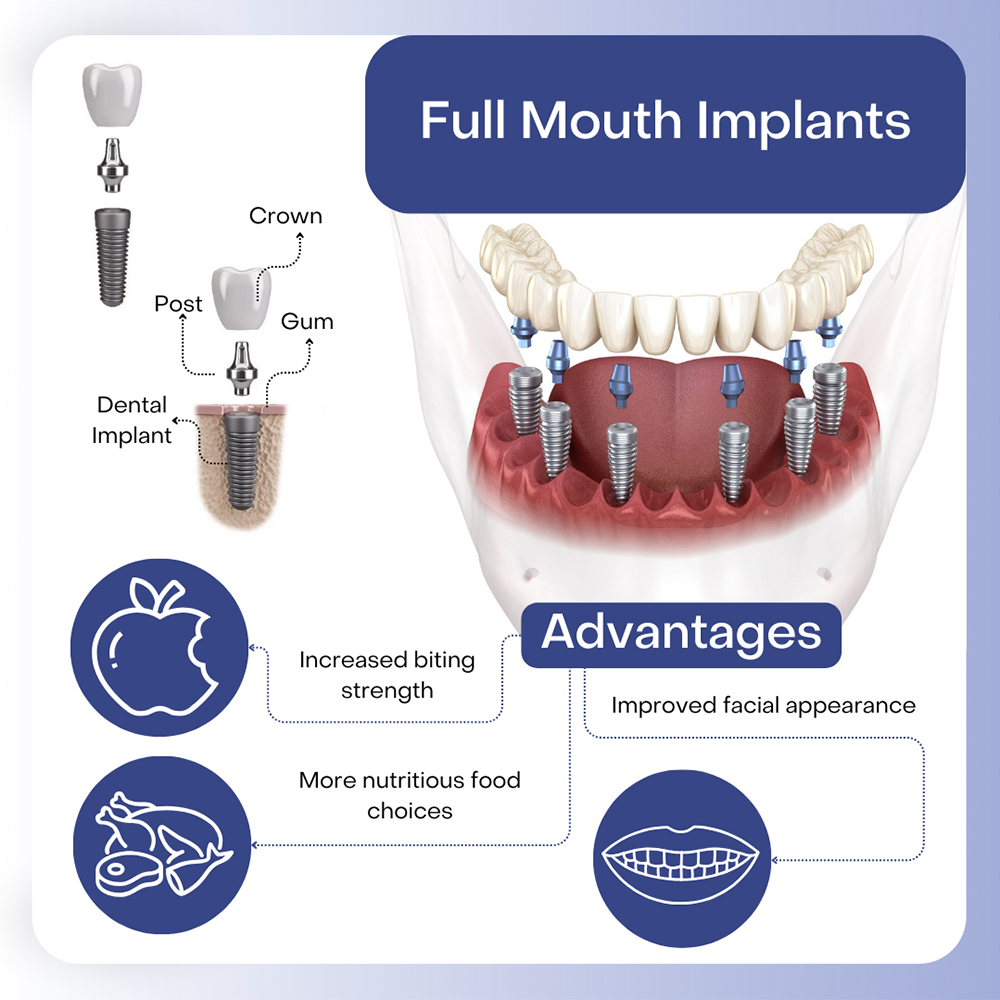The Definitive Guide for Dental Sense
The Definitive Guide for Dental Sense
Blog Article
Dental Sense - The Facts
Table of ContentsThe Main Principles Of Dental Sense Dental Sense Can Be Fun For EveryoneDental Sense - An OverviewSome Known Details About Dental Sense
are clinical gadgets operatively dental implanted right into the jaw to restore an individual's capability to chew or their appearance. They provide assistance for synthetic (phony) teeth, such as crowns, bridges, or dentures. When a tooth is shed due to injury or condition, an individual can experience complications such as rapid bone loss, malfunctioning speech, or changes to eating patterns that cause discomfort.Dental implant systems are composed of an oral implant body and dental implant abutment and may additionally consist of an abutment fixation screw. Dental veneers cost. The dental implant body is surgically put in the jawbone in location of the tooth's root. The oral implant abutment is generally affixed to the implant body by the joint fixation screw and prolongs with periodontals right into the mouth to support the attached artificial teeth
(https://www.easel.ly/browserEasel/14548839)Framework of The Oral Implant System choosing dental implants, speak to your dental supplier about the potential advantages and risks, and whether you are a prospect for the treatment. Things to consider: Your overall health is an essential consider determining whether you are a good prospect for dental implants, the length of time it will certainly take to recover, and for how long the dental implant might remain in area.
Smoking might influence the recovery process and reduce the long-term success of the implant. The recovery process for the implant body might take a number of months or longer, during which time you commonly have a temporary joint in location of the tooth. the oral implant treatment: Carefully comply with the oral health instructions offered to you by your oral service provider.
What Does Dental Sense Do?
Implant failing can lead to the need for one more operation to take care of or replace the implant system. Recovers the capability to eat Brings back aesthetic look Helps keep the jawbone from diminishing due to bone loss Protects the health of the bordering bone and gum tissues Helps maintain adjacent (neighboring) teeth stable Improves high quality of life Damage to surrounding natural teeth during dental implant positioning Injury to the surrounding tissues during surgery, such as sinus opening Injury during surgery (for instance, crack of surrounding jawbone) Insufficient function, such as seeming like the teeth do not bite together typically A sensation that the tooth hangs or turning in position resulting from a joint screw loosening Implant body failure (looseness of the dental implant body) as a result of systemic infection, which might be a lot more likely in patients with unchecked diabetics issues moved here as a result of local infection in bone and periodontals supporting the dental implant body because of delayed healing, which might be most likely in individuals that smoke Problem cleansing the gums around the dental implant, resulting in bad oral health Neglected periodontal illness Post-surgical feeling numb due to nerve impingement or damages Always inform healthcare service providers and imaging professionals that you have oral implants prior to any type of magnetic vibration imaging (MRI) or x-ray treatments.
FDA is not knowledgeable about any kind of adverse events reported for MRI or x-ray procedures with oral implants. Oral implants systems are normally constructed from materials that follow international agreement requirements of the International Organization for Standardization (ISO) or ASTM International. These standards have information of what makes a secure material.

An oral implant is a framework that changes a missing tooth. With screw-like gadgets, the cosmetic surgeon inserts an implant into the jawbone, and it serves as an anchor for an artificial tooth, called a crown. A device called an abutment attaches the synthetic tooth to the dental implant. The crown is custom-made to fit the individual's mouth and match the shade of their teeth.
Getting My Dental Sense To Work
Some people are not qualified for oral implant surgery. It is for oral specialists to operate individuals with: intense illnessuncontrollable metabolic diseasebone or soft cells condition or infectionIf these issues are settled, a person can have the surgical treatment. In, dental specialists abstain from operating individuals with: If people with any one of the above undertake oral implant surgical treatment, there is a higher threat of the implant failing.

Dental dental implant surgical procedure is a tailored process. It's not the very same for everyone. Yet the complying with provides a general introduction of what you can expect your dental expert, oral cosmetic surgeon, periodontist or prosthodontist to do: Put the implant operatively. Give you time to recover. Attach the post and last crown, bridge or denture.
Next off, your surgeon will carefully put the dental implant right into your jaw. If your dental implant is near the front of your mouth, your dental practitioner will certainly make a temporary tooth for you to put on until you recover.
The 6-Minute Rule for Dental Sense
Your copyright can inform you what to expect in your situation. During the recovery stage, your jawbone should fuse to the dental implant. This procedure, called osseointegration, is essential for stability and long-lasting success. This procedure can take anywhere from three to nine months. In some cases, it might take longer.
Once your implant heals, your dental expert can attach the joint (little port post) and your final repair (crown, bridge or denture). This generally takes regarding one hour to finish and may call for a 2nd small surgical procedure. You shouldn't feel any type of discomfort during your oral implant treatment due to the fact that your supplier will make use of drug to numb your periodontals.
Report this page